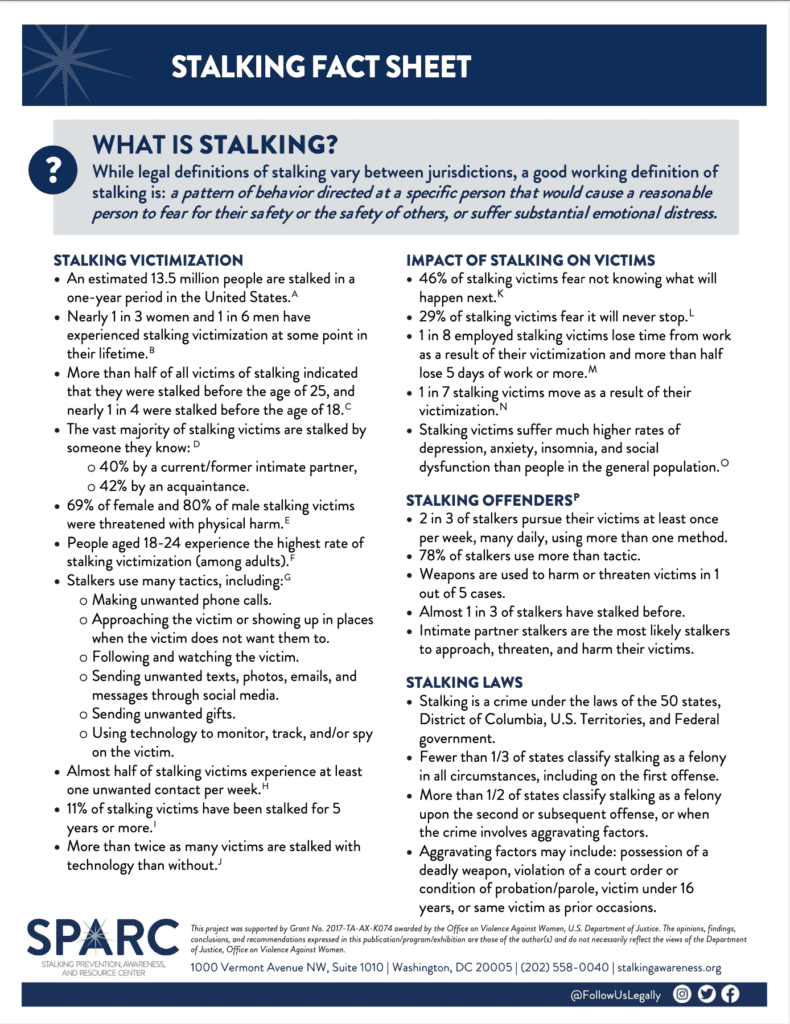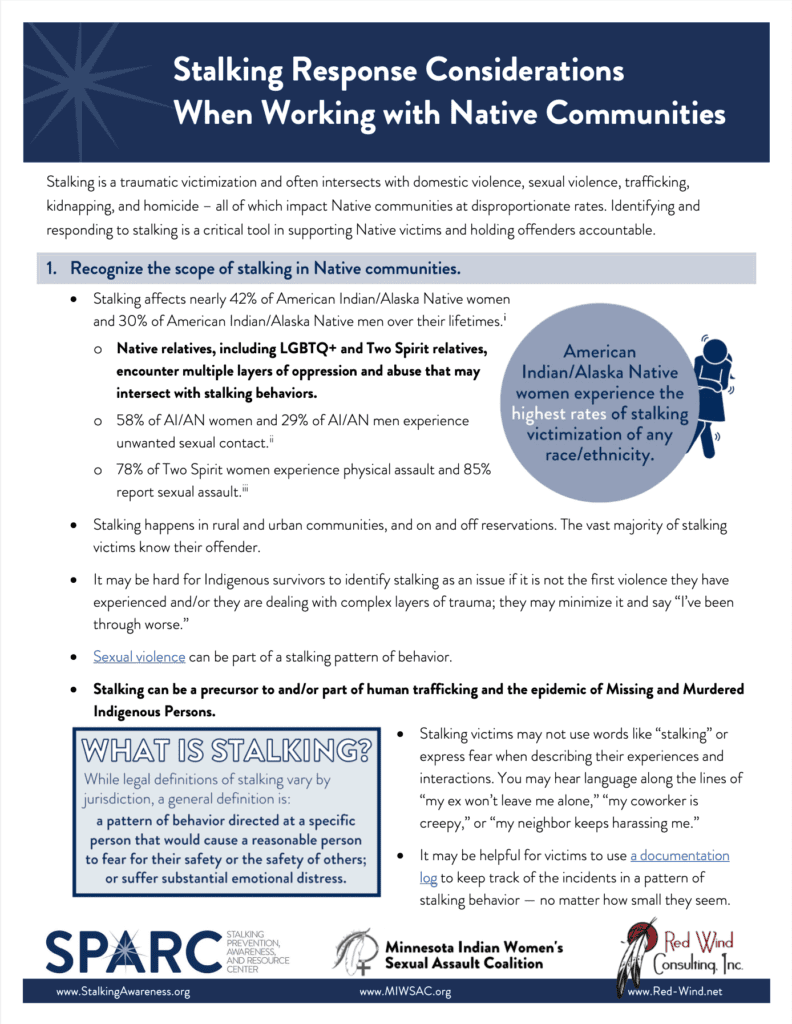Stalking is a course of conduct directed at a specific person that would cause a reasonable person to feel fear. Unlike other crimes that involve a single incident, stalking is a pattern of behavior. It is often made up of individual acts that could, by themselves, seem harmless or noncriminal, but when taken in the context of a stalking situation, could constitute criminal acts. – Victim Connect Resource Center
- Have you had someone follow you and show up wherever you are? Either online or in person?
- Has someone sent unwanted or excessive gifts, letters, direct messages, or emails to you?
- Do you feel like someone is monitoring your phone calls, computer use, or social media activity?
- Has someone posted information or spread rumors about you on the Internet, in a public place, or by word of mouth?
If you answered any of these questions with a “yes” for yourself or for someone you care about, you should keep reading this because it has information that may help you better understand stalking.
What does Stalking Mean?
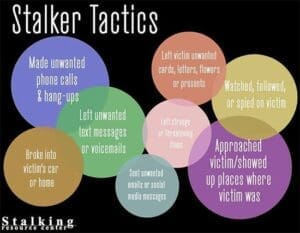 There are numerous legal definitions of stalking and can vary depending on the jurisdiction, along with other factors.
There are numerous legal definitions of stalking and can vary depending on the jurisdiction, along with other factors.
In short, stalking is an action directed at a specific person that would cause a reasonable person to feel fear. It’s also a series of incidents that can escalate and lead to sexual and domestic violence. Stalking results from a pattern of behavior composed of two or more acts over a period of time, which could be short. A “reasonable person” standard asks if a person in similar circumstances would be made afraid by the perpetrator’s behavior. The victim may feel frightened, intimidated or threatened, or fear that the stalker intends to injure the victim, another person, or the property of the victim or of another person close to the victim. The victim may also feel terrorized. For more information on specific statutes on stalking in New Mexico, visit the Victim Connect Resource Center website.
What does Stalking Look Like?
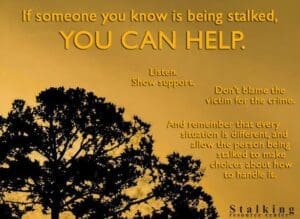 According to the Victim Connect Resource Center, “a stalker can be someone you know well or not at all. Most have dated or been involved with the people they stalk. Most stalking cases involve men stalking women, but men do stalk men, women do stalk women, and women do stalk men.”
According to the Victim Connect Resource Center, “a stalker can be someone you know well or not at all. Most have dated or been involved with the people they stalk. Most stalking cases involve men stalking women, but men do stalk men, women do stalk women, and women do stalk men.”
Some characteristics of stalking include non-consensual communication, including in-person communication, telephone calls, voice messages, texts, email, social networking site postings, instant messaging, postings of pictures or information on websites, written letters, gifts, or any other communications that are undesired and/or place another person in fear.
Other examples include:
- Following, pursuing, waiting, or showing up uninvited at a workplace, place of residence, classroom, or other locations frequented by a victim
- Surveillance and other types of observation, whether by physical proximity or electronic means
- Trespassing
- Vandalism
- Non-consensual touching
- Direct physical and/or verbal threats against a victim or a victim’s loved ones
- Gathering of information about a victim from family, friends, co-workers, and/or classmates
- Manipulative and controlling behaviors such as threats to harm oneself, or threats to harm someone close to the victim
- Defamation or slander against the victim
- Calls over and over again, even when asked to stop
- Sending unwanted gifts and/or making unwanted communication through emails, texts, calls, and social media presence
- Monitoring victims whereabouts without knowledge and permission by using social media or GPS tracking apps/devices to track location, calls, and messages
- Making threats towards, or damaging, the victims loved ones, pets, community, relatives, property, and/or possessions
What does stalking look like for our American Indian/Alaska Native women and our LGBTQ2S+ Relatives?
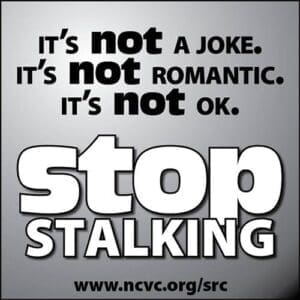 According to the 2016 National Institute of Justice Research Report: Violence Against American Indian/Alaska Native Women and Men, 48.8% of American Indian/Alaska Native women experienced stalking in their lifetime and 11.6% of American Indian/Alaska Native women experienced stalking in the past year. This means 1 out of 2 of American Indian/Alaska Native women have been stalked at some point in their life (2).
According to the 2016 National Institute of Justice Research Report: Violence Against American Indian/Alaska Native Women and Men, 48.8% of American Indian/Alaska Native women experienced stalking in their lifetime and 11.6% of American Indian/Alaska Native women experienced stalking in the past year. This means 1 out of 2 of American Indian/Alaska Native women have been stalked at some point in their life (2).
The rates of sexual violence targeting our Lesbian, Gay, Bisexual, Transgender, Queer, Two-Spirit Relatives, and plus (LGBTQ2S+) according to the 2010 National Intimate Partner and Sexual Violence Survey conducted by the Center for Disease Control and Prevention states 44 percent of lesbian women and 61 percent of bisexual women have experienced rape, physical violence, and/or stalking by an intimate partner in their lifetime as compared to 35 percent of heterosexual women. Furthermore, 26 percent of gay men and 37 percent of bisexual men have experienced rape, physical violence, and/or stalking by an intimate partner at some point in their lifetime as compared to 29 percent of heterosexual men. For learn more of the challenges of transgender relatives in the United States, check out the 2015 US Transgender Survey released by the National Center for Transgender Equality.
Everyday is a perfect opportunity to learn more information about sexual violence and to share what you have learned with one of your relatives so they too can identify this violence.
Stalking Resources
Stalking Hotlines
1-855-484-2846
Victim Connect has a list of resources available for persons experiencing stalking, information available includes information on what to do if you’re being stalked, a guide for creating a safety plan, facts, and information on local resources.
505-246-9240
You can contact the New Mexico Coalition Against Domestic Violence, who can put you in a contact with a victim advocate in your local area.
505-243-9199
If you need help finding an advocate to assist you, please contact CSVANW – although we do not provide direct services, we can refer you to a local advocacy agency.
On This Page:

